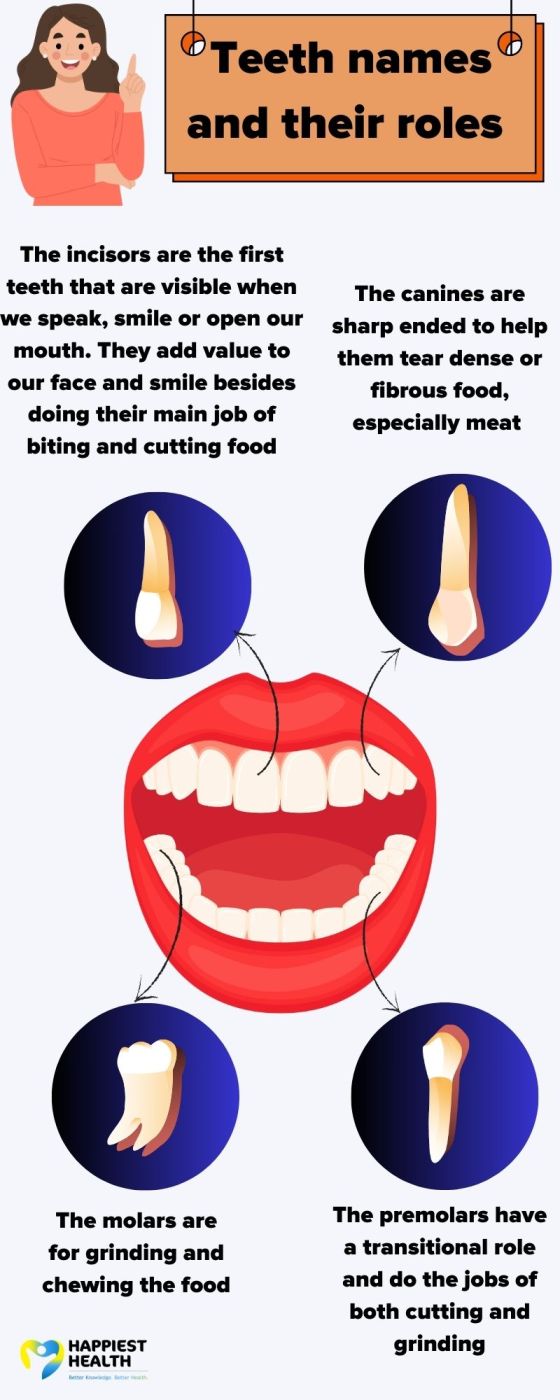A smile expresses human emotions in a universal language that needs no words but connects people. The beauty of that greeting is enhanced when we flash a healthy set of teeth.
Why are there so many teeth that are not all alike? What are their jobs? Here is a fun and simple way to know about our pearly whites – often taken for granted and their owners shrouded in ignorance.
We all develop two types of teeth. The teeth that serve us in childhood are our primary or milk teeth. As we grow, they are replaced by secondary or permanent teeth – which should serve us and indirectly endure our sustenance and nutrition through our lifetime.
Names of teeth
Adults have 32 permanent teeth that are equally distributed across the upper and lower jaws. The dental formula in adults includes four incisors, two sharp canines, four premolars and six molars in each jaw. This formula makes it 16 teeth each in the upper jaw and lower jaws.
While the incisors and canines are situated in the front, premolars sprout at the sides and the molars settle at the inner ends of the dental curves.
The wisdom teeth that commonly erupt in our early adulthood are the last molars, one at each end of the jaws.
These names are of Latin origin. The incisor come from ‘incidere’, meaning `to cut’; the canines were probably inspired by a dog’s sharp fangs as they are derived from the word ‘canis’ meaning dog.
The word ‘molaris dens’ provides the name molar or millstone tooth since the molars help in grinding the food just like a grain mill. And finally, the premolars indicate their position preceding the molars.
Functions
“The primary function of teeth is to break food into smaller pieces and help in the formation of a bolus [a ball of chewed food] that is ready for swallowing. This process makes digestion easier,” says Dr Dinakar Jayakumar, vice-principal, Rajas Dental College, Tirunelveli, Tamil Nadu.
He reminds us that teeth along with the tongue play a role in speech and in pronouncing various sounds accurately. They also support the facial muscles and maintain the structure of the face, thereby enhancing our facial appearance.

The last molars or wisdom teeth erupt have very limited function. In some people, they may not show up in their mouth at all and may remain hidden inside the gums.
Some adults may have an extra tooth known as the supernumerary tooth. In this rare scenario, this tooth may erupt in between the incisors or behind the molars.
Regular check-ups, a healthy diet and good care of oral hygiene can keep our pearly whites healthy and lasting.















